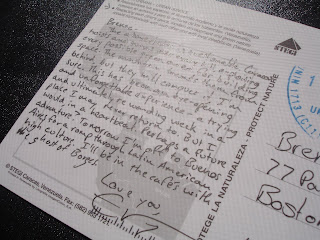This Halloween, don’t only dress up in a costume, let your imagination dress up in some imaginary lives and see what they say to you.This morning, I walked into the kitchen, where overnight the blood splattered blade of a guillotine magically appeared. Skulls hung in dirty nets above the sink. In my largest Cuisinart pot was a boiling concoction filled with bones that smelled as bad as it looked.
It is two days before Halloween.
Every year in our household, the last weeks of October gather into a maelstrom of dark and gory creativity as my boyfriend preps his props for the (terrifying) haunted house that he runs at a local country club. With the apartment looking like Jack Skellington’s workshop, and class prep on my mind, I was inspired to take a different angle and think about the lighter-side of Halloween today. Not the traditional meaning of the holiday, but the actual traditions—such as dressing up in costume.
This put me in mind of one of the activities from Julia Cameron’s The Artist Way that she calls Imaginary Lives (and I call Five Lives for ease of remembering).
It is a simple activity, not to be over-thought, where you list what you’d be if you had five other lives to lead. I suspect that this is actually an activity that everyone indulges in to a certain amount everyday in their imagination, which is why it becomes very powerful to put pen to paper and see what lives are officially calling to you.
My list today includes:
1. Secret Agent
2. Sea Captain (circa 1880)
3. Stationery & Gift Shop Owner
4. Best Selling Author (paperback “trashy” romances)
5. Yoga Teacher
This exercise has two very important elements to it that relate to creativity and inspiration. The first is that through seeing what lifestyles or careers are sparking your imagination, you can dig a little deeper and see what themes each of the lives has that make it so attractive. (This digging is important, because frankly as much as I like the idea of being a circa 1880 Sea Captain, it would: a.) be impossible due to restrictions in time travel. And b.) I like hot showers.)
Through a light “digging” into each of my five lives, I discover:
1. Secret Agent = Mystery + Adventure + Action
2. Sea Captain (c. 1880) = Adventure + Exploration + New Horizons + Travel + Courage
3. Shop Owner = Independence + Creativity + Merchandising + My Own Space + Action + Community + Sharing Happiness
4. Best Selling Author (Romances) = Writing + Creativity + Sharing Happiness + Fun + Research
5. Yoga Teacher = Healthy Body + Energy + Sharing Happiness
As you can see from my list, there are some themes such as Adventure and Sharing Happiness. These are two things that I can then brainstorm (or mind map) on how to incorporate into my real life, rather than it just be an impulse that manifests itself in my imagination.
Which brings me to the second valuable inspiration element of the Five Lives activity: action and incorporation.
There are two directions you can take the results of the activity once it is on paper. You can take the idea of the lives at face value, and use a creative medium to explore that life. For instance, I could write a one page sketch of my inner Sea Captain (that could lead to an awesome character for a longer story). Or, I could plan a trip down to tour the USS Constitution in Boston Harbor. Or, I could watch Master and Commander: Far Side of the World.
If I explore this from the themes that being a c. 1880 Sea Captain represents in my imagination, I can think about ways that I can add some adventure to my life. Maybe I begin to think about planning a trip, or learning something new in order to appease the desire for new horizons or adventure.
There are many, many ways to leverage this simple activity. Use it as a way to enrich your everyday life, which in turn, nourishes your creative self.
This Halloween, don’t only dress up in a costume, let your imagination dress up in some imaginary lives and see what they say to you.
Inspired? I'd love to hear about your imaginary lives! Share here on The Paper Compass.















